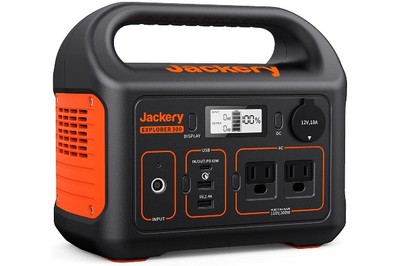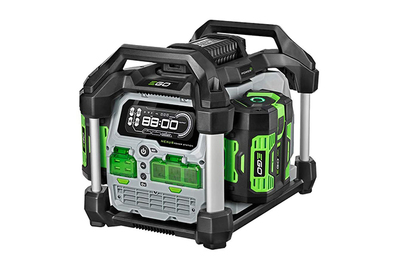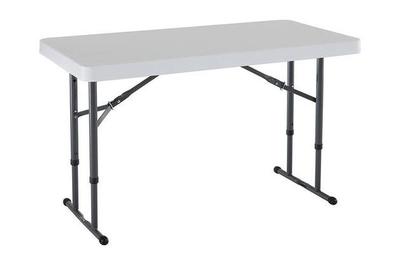Although watching football on TV is generally considered an indoor sport, a tailgate party can also be a great place to tune in to your favorite team, combining the in-person fervor of the stadium with the hi-def details of a screen. While that may seem like an endeavor undertaken by only the most hardcore tailgaters, running power to a TV in a parking lot is actually a lot easier than you might think.
Whether you drive a newer-model EV or an old-school jalopy, you have a few options for powering a TV safely and conveniently, including using your car’s battery or relying on outside sources. Wirecutter’s experts, of course, have some recommendations. And whatever arrangement you choose, the final result will surely surpass any viewing experience your teeny smartphone screen could offer.
How to power a TV at a tailgate
TVs are designed to run on AC (alternating current). Car batteries produce DC (direct current), so it’s relatively uncommon for cars to have AC outlets installed, though some SUVs and pickups have them.
The most important consideration is whether your power source can run your TV for the three or four hours a football broadcast lasts (counting pre-game and post-game shows). Battery-driven power stations are usually rated in kilowatt-hours (kWh); a battery rated at 1 kWh (such as a typical car battery) can deliver 1 kilowatt for one hour—or 100 watts for 10 hours, and so on. Check the power draw on your TV (it’s usually in the specs section of the manual), multiply that by four, and that’s how many watt-hours you need for a tailgate. So if your TV draws 50 watts of power, you need 200 watt-hours, or 0.2 kWh.
One simple, cheap fix is to plug a power inverter, which converts DC to AC, into your car’s 12 V socket. (This socket is sometimes the same thing as a cigarette-lighter jack, but sometimes not, so check your car’s manual.) The Bestek 300W Power Inverter, which we also recommend as a power-outage essential in emergency situations, does the trick; it features two AC outlets and two USB ports, weighs less than a pound, and is designed with a 40-amp fuse to protect against surges.
The potential drawback, notes senior staff writer Brent Butterworth, is that you’ll likely have to keep your car’s ignition on or engine running to keep the socket or lighter jack powered, and in doing so you could run your car’s battery down. A healthy car battery can run most TVs for a few hours, though.
If you don’t want to rely on your car’s battery, the next-easiest option is to use a rechargeable portable power station that comes with AC outlets and likewise doubles as good-to-have emergency gear. Because a 32-inch TV might pull only about 40 watts of power, Brent says all three of our portable power picks—including our budget pick, the Jackery Explorer 300, which comes with two AC outlets and two USB ports and weighs just 7 pounds—may deliver more power than a TV needs, so you could go with an even cheaper option (and a former pick of ours), the Jackery Explorer 160.
What size generator do you need to tailgate?

Like many of our portable power station picks, pretty much any generator can deliver more than enough power to show an entire football game (even if it goes into overtime). On the plus side, that means you can catch all the pre-game and post-game coverage, or even a full day’s slate of games, without any recharging concerns.
Senior editor Harry Sawyers recommends the Ego Power+ Nexus Portable Power Station, a gas-free pick from our portable generators guide, for several reasons. “It’s a silent, emissions-free power source that’s better for noise, air quality, and the environment,” he says. If you’re wary of the Ego’s $1,000 price tag, our runner-up, a Ryobi model, costs a few hundred dollars less, and though it’s gas-powered (and therefore louder), its Bluetooth app allows you to switch it to eco mode for better fuel efficiency. (As with any gas-powered generator, you should use it only in a fully outdoor environment due to the risk of carbon monoxide poisoning.)
How to watch TV at a tailgate
Now that your TV’s powered up, how do you get the game on your screen? You could plug an HDTV antenna into your power source, although Adrienne Maxwell, our supervising editor of audio/visual coverage, warns that you’d get only a limited number of channels. If those don’t include the channels you want, she suggests using a mobile device with cell service to stream YouTube TV, Hulu+ Live TV, or ESPN+, which would require HDMI cables (our top pick from Monoprice is only a few bucks) or adapter cables (like USB-C or Lightning to HDMI for mobile) to connect your video source to the TV.
For daytime tailgating, Brent suggests making sure your TV is positioned with the sun behind it in order to avoid a washed-out screen; if you’re placing the TV in the bed of your truck or in the trunk of your hatchback, for instance, park the vehicle so it points in the direction of the sun. If you need a separate surface to put the TV on, opt for a sturdy, multipurpose folding table, such as the Lifetime Height Adjustable Folding Utility Table we recommend. Make sure that the table is long enough to accommodate the legs of your TV stand.
Another way to prevent screen glare while also protecting your TV from the elements is to rig a tarp over the top of it with rope or bungee cords. (Or, you could splurge on an outdoor TV designed to handle rain, but that really isn’t a necessity.) Senior staff writer Lee Neikirk adds that plenty of weatherproof shields or shells that offer protection while you view are available, though we haven’t tested any of them.
This article was edited by Annemarie Conte and Brent Butterworth.








